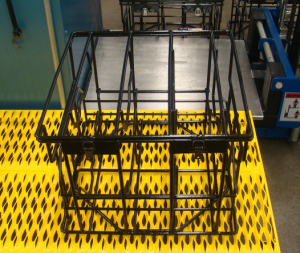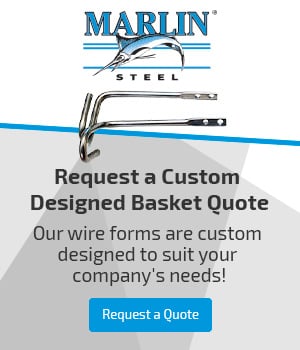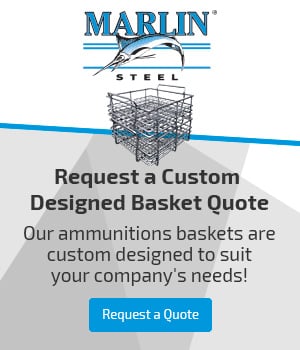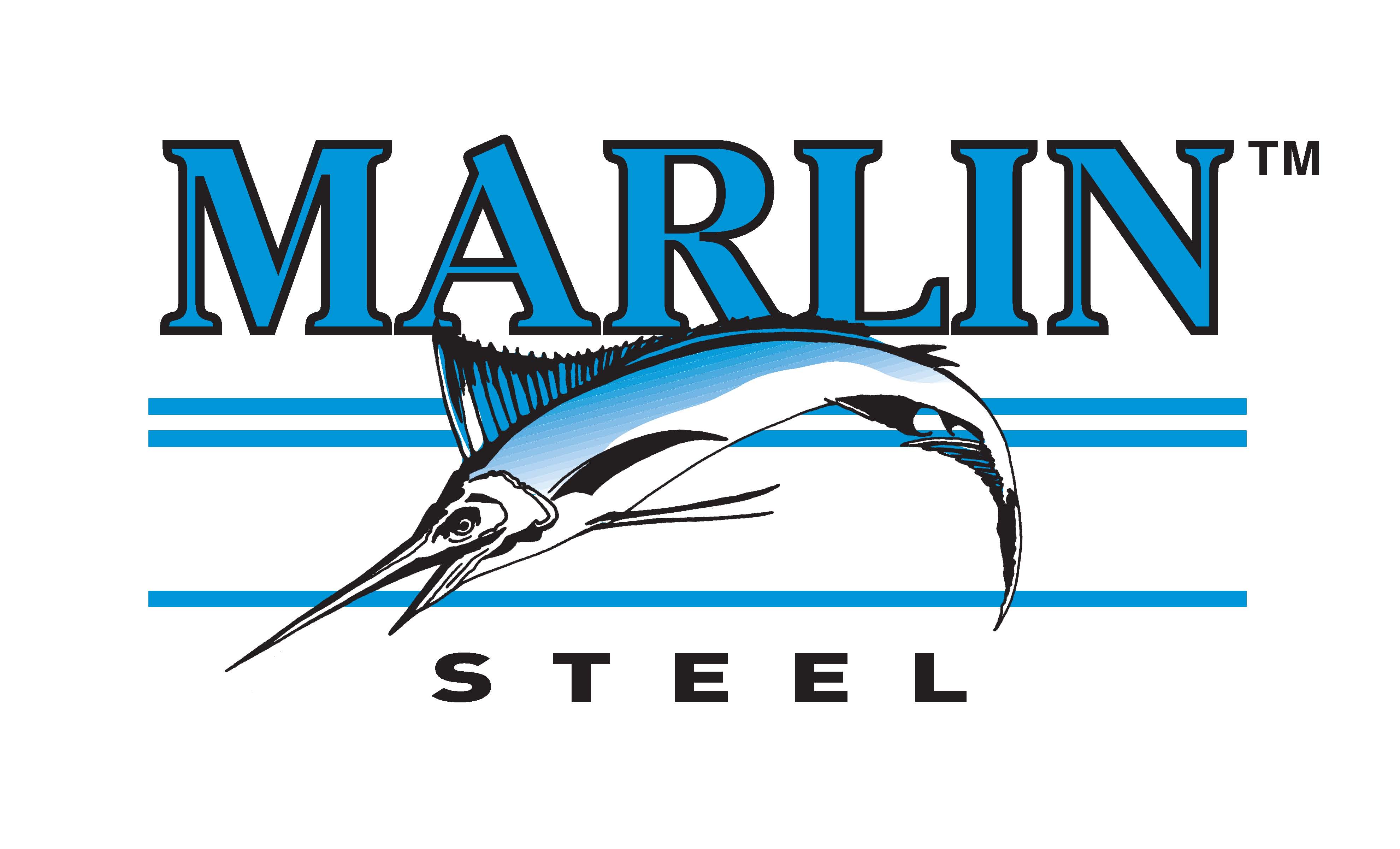 As a company, Marlin Steel is famous for its material handling and washing baskets for sensitive parts. Back in the day, Marlin Steel was most well-known for the manufacture of commodity bagel baskets for bakeries to use in the display of their bagels. Much has changed in the intervening years, to say the least.
As a company, Marlin Steel is famous for its material handling and washing baskets for sensitive parts. Back in the day, Marlin Steel was most well-known for the manufacture of commodity bagel baskets for bakeries to use in the display of their bagels. Much has changed in the intervening years, to say the least.
Now, thanks to heavy investments in advanced robotics and employee improvement, Marlin Steel has the equipment and the expertise needed to craft custom wire forms for innumerable applications.
Traditionally, the biggest challenge in building a parts washing basket is getting a complete grasp of the application for which the basket will be used. It is very important to ask the right questions before attempting to manufacture the basket. By asking the right questions, it is possible to minimize costs, number of design iterations and the time it takes to go from initial design bid to finished product.
Learning to ask the right questions is more than a matter of training, it is a matter of real-world experience and knowledge. Marlin Steel’s engineers have successfully designed countless wire forms for use with a large variety of products, including:
- Air foils.
- Pump housings.
- Valves.
- Nuts & bolts.
- Automotive parts.
- Dental implants.
- Firearms.
The above are just a few examples of the types of parts that Marlin Steel engineers have designed baskets for over the years. Thanks to their years of experience in designing baskets for all sorts of uses, Marlin’s engineers know just what questions to ask before they start building a basket.
Design Considerations: the Frame
Once the engineer has a complete picture of what the basket will be used for and the types of chemicals and temperatures it will be exposed to, he or she will set to work designing the frame of the basket. While there are innumerable different factors that will affect the design of the basket, such as the dimensions of the object to be held and the nature of the parts washing process, there are a few things which are fairly constant in a well-designed basket.
For example, most Marlin Steel baskets use a diamond-shaped base to reinforce the bottom of the wire mesh basket. This diamond pattern not only helps the wire mesh retain its proper shape when fully loaded, it also helps to prevent the basket from becoming stuck on conveyor belt systems. A square shaped bottom can snag very easily on a flat, wide transitioning surface. The diamond shape minimizes the point of contact between the edge of the conveyor belt and the basket, greatly reducing the chances that it will be caught on the edge of the conveyor.
The specific grade of stainless steel used for the frame, and any coatings that will be applied to it, will be determined largely by the needs of the part and the cleaning process. In washing operations that employ water, alcohol or detergent-based cleaning solutions, grade 304 stainless steel is usually the best material. However, for corrosive chemical bath processes that would eat 304 stainless, grade 316 stainless steel is better. Without knowing the washing process before designing the basket, something as basic as choosing the right alloy for the basket is impossible.
The Lid
The design of the lid for the basket should receive the same consideration and care that the design of the basket’s frame receives. For many parts washing processes, the lid is what keeps the small, delicate parts being washed from becoming lost or even damaged in the parts washing machine.
When a basket is being designed with a lid, it is vital that the lid is sturdy enough to not open accidentally during the wash cycle, but can be opened without difficulty when not in use. Once again, knowing the specific details of the washing process and of the parts being washed is invaluable to creating the perfect lid. In some processes, a simple shoebox-type lid that wraps the edges will work fine, while other processes might require a more secure latch to prevent the lid from coming open while the basket is being rotated or submerged.
The Wire Mesh
A parts washing basket would be fairy useless if the cleaning solution couldn’t reach the part to be washed inside the basket. Because of this, the open area of the mesh (the space between the wires) is definitely something that needs to be taken into consideration.
The open area of a wire form basket can vary by quite a bit, anywhere from 20 to 80 percent of the total area of the mesh surface. At 20 percent open space, the openings between wires are usually narrower than the wires themselves. At 80 percent open space, the openings are very large, allowing for most cleaning solutions to flow freely through the mesh: however, the thinner wires won’t be as durable and long-lasting.
To achieve the optimum balance of durability and flow, Marlin Steel’s engineers aim for an open area of around 50 percent in their wire form designs. At 50 percent open area, the wires themselves are thick enough to withstand repeated wash cycles, while being open enough to allow most fluid and aerosol cleaning solutions to reach parts easily.
One important caveat for designing a wire mesh basket is that the frame, as well as any other additional parts such as latches and hinges, take up some of the open area on a basket. As a result, the open area of a wire mesh basket that was designed to be 50 percent might actually be 40 percent if you take these space-consuming structural elements into account.
By taking into account the dimensions of the part to be washed and the nature of the washing process, Marlin’s engineers can design the right basket for the job quickly and easily.

.gif)


